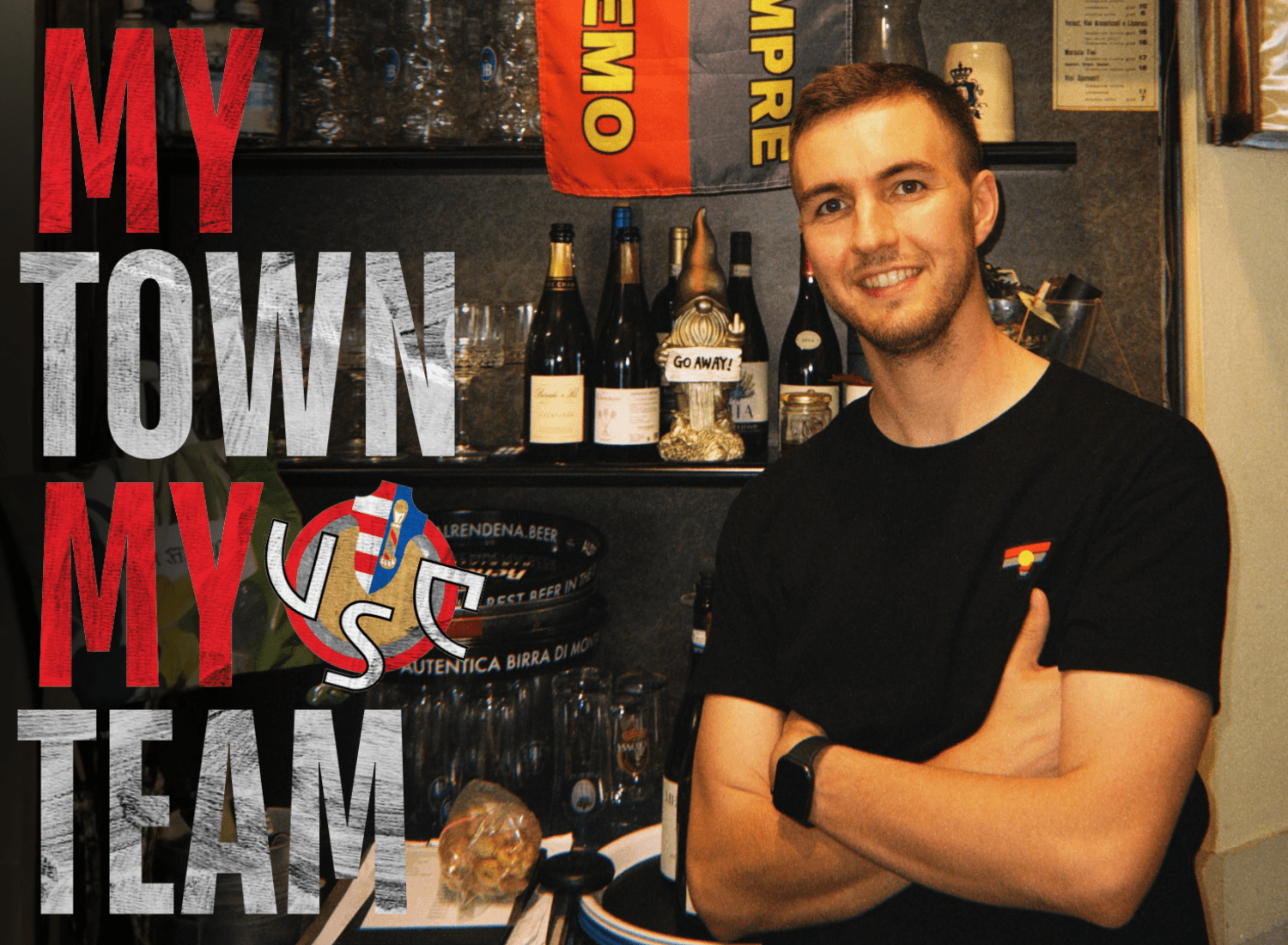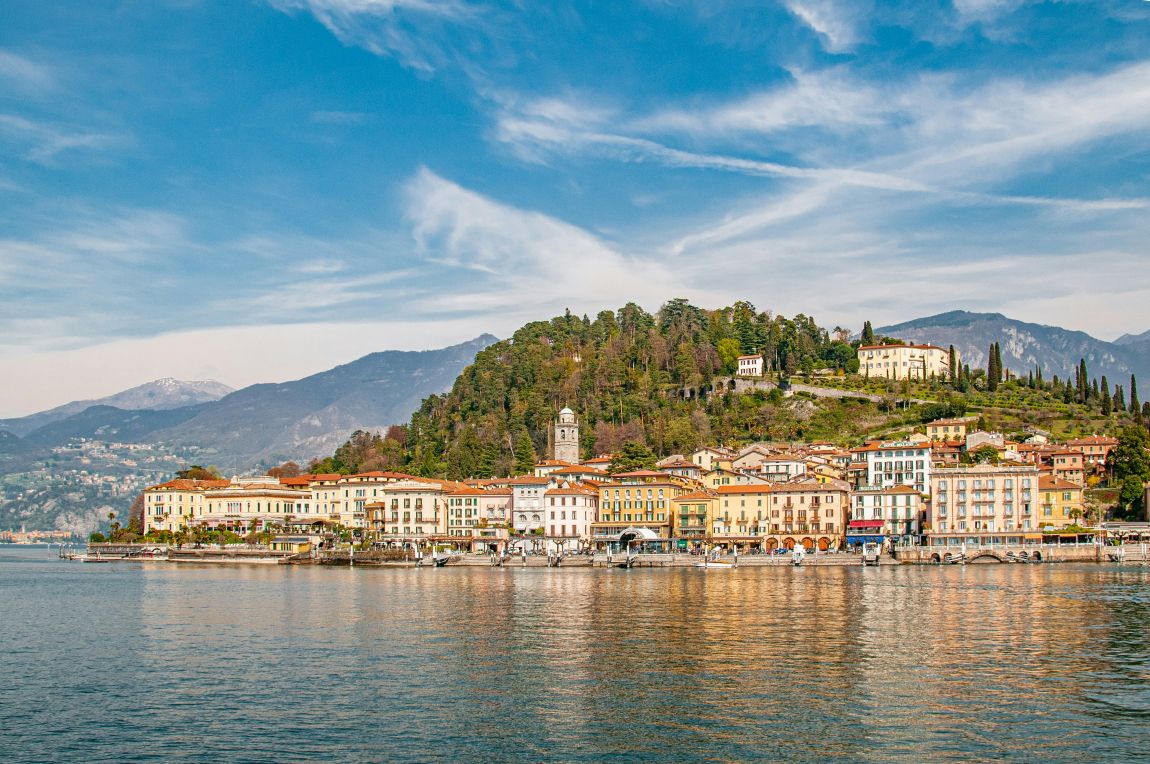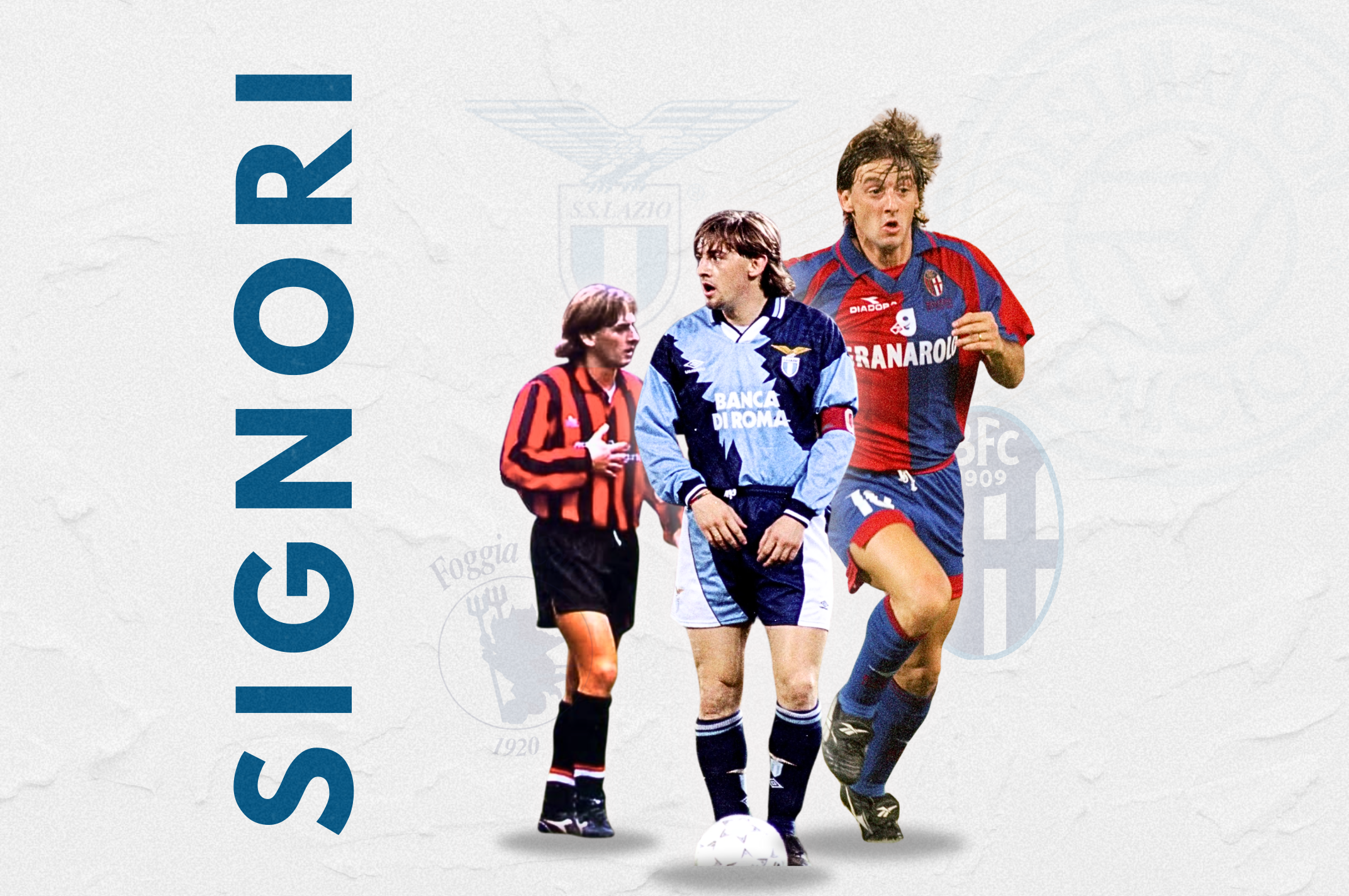
Beppe Signori – the Pint-sized Predator who Exploded as Serie A’s Sharpest Shooter of the 1990s
By Emmet Gates
Roberto Baggio’s infamous transfer from Fiorentina to Juventus in the summer of 1990 ignited three days of protest from Viola fans.
Cars were burnt, windows were smashed and the Carabinieri drafted in to try and restore order as the city of Michelangelo, Dante and Botticelli was turned upside down. Yet it wasn’t the only protest staged over the transfer of a forward between Italian clubs in the decade.
There was a lesser known one five years later.
In June 1995, Giuseppe ‘Beppe’ Signori was on the cusp of leaving Lazio for Parma, with a deal agreed between club owners Calisto Tanzi and Sergio Cragnotti.
Cragnotti announced that Signori was leaving the capital and the deal was as good as done. Tanzi had forced Cragnotti’s hand somewhat, announcing the deal was close earlier the same day.
Cue mass protests from Laziali across Rome, with hordes of fans descending on the club’s headquarters in Via Novaro. Radio stations were bombarded. Posters were put up branding Cragnotti a Judas.
Dino Zoff, the club’s president, was perplexed over the move.
Unlike the Baggio deal, the ink wasn’t dry on the Signori move and such was the outpouring of anger from Lazio fans —by the end of the second day some 4,000 of them had appeared outside the club’s HQ — Cragnotti held a summit with shareholders and Zoff.
Cragnotti needed the sale of Signori to balance the books. Zoff, no doubt probed by Lazio coach Zdenek Zeman, pointed out what selling Signori would mean from a technical point of view: he’d scored 66 Serie A goals in three seasons with the Biancocelesti, a ridiculous figure for a striker not playing for one of the big three.
Moreover, Signori was Lazio captain and the player himself was kept in the dark about the proposed transfer, confessing from Brazil — where he was on holiday — that he didn’t want to leave Rome.
In the end, Cragnotti wilted under the pressure and called the deal off.
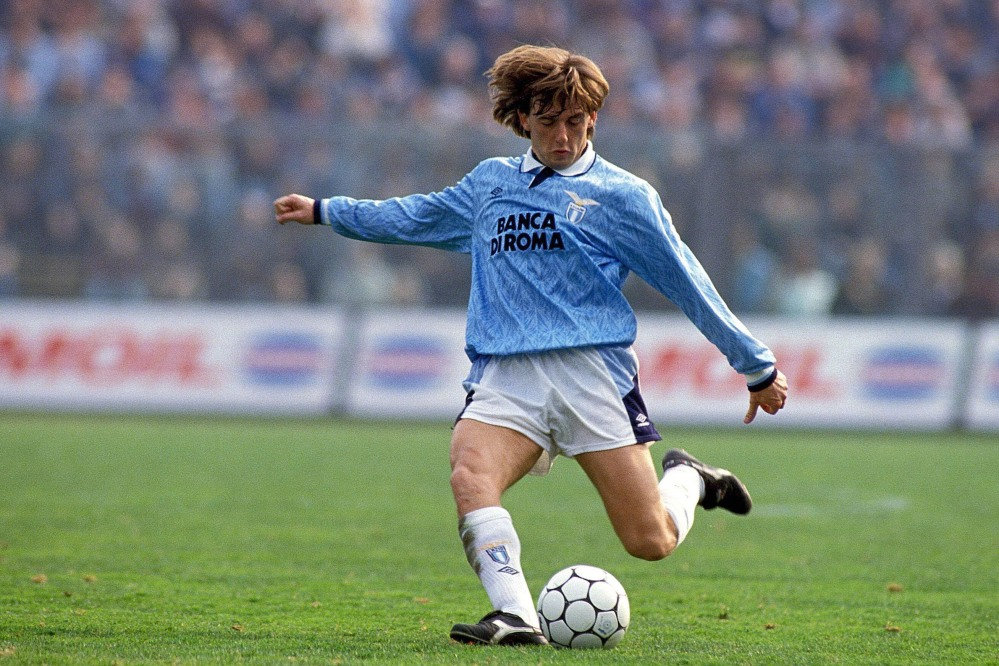
Parma had to look elsewhere and, after being rejected by Baggio and Gabriel Batistuta before turning to Signori, the Gialloblu eventually signed the-then Ballon d’Or holder Hristo Stoichkov from Barcelona.
In the aftermath of the protests Cragnotti declared his intent to sell Lazio and get out of football: “I’m selling and resigning from all my positions, I’m very bitter and no longer intend to be involved in the sport,” he famously remarked.
He later backtracked on this too.
Yet the protests highlighted just how cherished Signori, or ‘Beppegol’ as he was known, was by Lazio fans.
“That moment was worth 10 Scudetti for me, maybe more” Signori reflected years later. “There is no better reward than having the affection of the people.”
The argument is there that Signori is perhaps the greatest footballer to never win a major honour. He’s certainly in the conversation.
A pint-sized striker capable of playing either as a No9 or a 10, Signori’s career has almost been forgotten due to the decade-long Calcioscomesse scandal. He was charged with involvement in fixing matches involving Modena and Piacenza in 2010 and 2011 as part of a Southeast Asian betting syndicate.
Signori was the most high-profile name indicted and was banished from the world of football as a result.
It took 10 years for the former Italy international to clear his name, when many of the charges against him were dropped in 2021 and he was later was acquitted of the more serious accusations of match-fixing.
FIGC president Gabriele Gravina pardoned Signori and allowed him to re-enter the world of calcio. Yet his involvement has been minimal.
His legacy has been, through no fault of his own, tarnished. Yet there was a time when Signori’s name was a byword for goals.
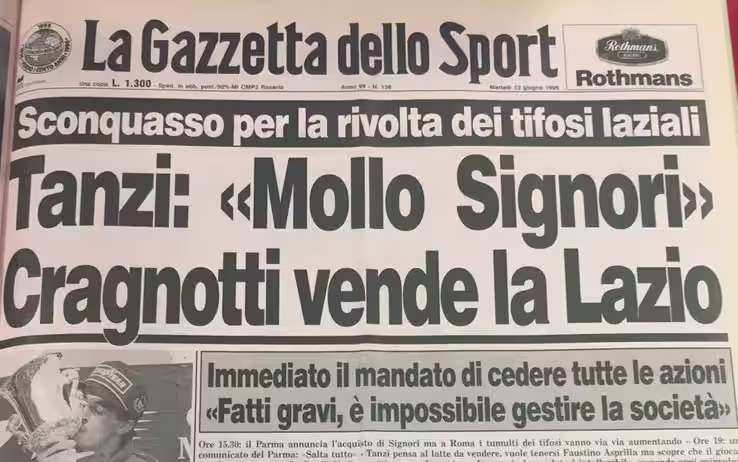
No one outscored him in Serie A’s last great decade, the 1990s. In a league full of superstars and defenders capable of stopping the world’s most feared strikers with relative ease, it was Signori who emerged as the most lethal marksman of the era.
His 141 goals saw Signori clear Batistuta, Baggio and Abel Balbo to top the list, made all the more remarkable considering he spent the first season of the ‘90s in Serie B with Foggia.
And it was with the Rossoneri that Signori made his name. Let go by Inter Milan in the mid ’80s as a youth due to his diminutive stature, Signori fought his way to the top of the pyramid.
He bounced around several clubs in the lower echelons of the Italian game, including stints at Leffe, Piacenza, Trento and another spell at Piacenza, before finding his stride in Puglia.
Twenty-one years of age by the time he made his way to Foggia, few would’ve expected the avalanche of goals that was to come.
To that point Signori had only scored 14 goals in his career and had been utilised as a left winger or trequartista due to his technical ability. Yet at Foggia Zeman realised he was capable of so much more, and repositioned him as a striker in his ultra-attacking 4-3-3 formation.
Such was Zeman’s conviction of turning Signori into a striker that upon their first meeting in 1989, he walked up to Signori and said, ‘Hello bomber’.” In Italian football parlance, the word bomber refers to a striker, a No9, in the mould of Gigi Riva, Bobo Vieri or Gianluca Vialli. In short, players whose only currency is goals.
Signori recalls being astonished by Zeman’s phrase, and looked behind him to see who he was talking to. Yet Zeman repeated himself, even when Signori lacked belief in his own ability.
“You could say anything about me except that I scored goals,” Signori remarked in an interview in 2000. “I scored five the previous season [with Piacenza] and that seemed a lot.”
Signori recalled the brutality of his first pre-season under Zeman: “During the pre-season retreat, I couldn’t even climb up the stairs in the evening.”
Zeman was maniacal on fitness and made the Foggia players eat potatoes for three days in order to detoxify. He’d then send them on a gruelling 10km run, with Signori recalling the last kilometre was termed the ‘one of character’.
Yet Signori and the Foggia players understood what Zeman was attempting and why he was putting his players through hell.
But in the first half of the 1989-90 season Foggia struggled. They were in the bottom half of Serie B with only three wins and Zeman was on the verge of being sacked before a vital 3-1 victory over Messina in mid-November, in which Signori scored the opener, kept him in the job.
The rest was history.
Foggia steamrolled over Serie B the following season and secured promotion to the top flight for the first time in 13 years. Zemanlandia was in full swing, his swashbuckling 4-3-3 system producing 67 goals from 38 games.
Signori scored 11, with future Derby County cult hero Ciccio Baiano netting 22.
Foggia surprised everyone by not just surviving in Serie A, but thriving. Zeman guided them to two ninth-place finishes in three seasons.
Yet by that stage Signori had already left. Signed by the Biancocelesti in the summer of 1992, he was now simply too good to remain at Foggia and was one of the first major signings by new owner Cragnotti.
Under Dino Zoff, Signori exploded in the way Zeman imagined. He finished his first season as Capocannoniere with 26 goals, a tally not seen since Sergio Brighenti rattled in 27 for Sampdoria in 1960-61.
Signori repeated the trick a season later, finishing five goals clear of Gianfranco Zola.
Yet Lazio were underperforming by Cragnotti’s lofty ambitions, and Signori played a role in bringing Zeman to Rome.
Reunited with his father figure, Signori scored a modest 17 goals in 1994-95, yet Lazio finished second behind Juve and it appeared the Signori/Zeman duo could inspire the club to a first title in over 20 years.
Signori famously wore boots too small for his feet, which he claimed improved his technique and ability to manipulate the ball. Whether it did or not is hard to prove, but what isn’t hard to prove is the quantity and quality of his goals.
Following the protest episode, Signori paid back the loyalty the following campaign by winning a third Capocannoniere title in four seasons, sharing the award with one-season wonder Igor Protti, both scoring 24 goals.
Under Zeman, Signori struck up a productive partnership with Pierluigi Casiraghi in the Czech’s preferred 4-3-3. Casiraghi hit 14 in Serie A that season and went to Euro ’96 under Arrigo Sacchi.
Signori had irked Sacchi, like many before him, in the build up to the 1994 World Cup final. The Lazio striker asked the Italy manager to utilise him as a striker for the final, with Roberto Baggio’s hamstring in a precarious state, instead of being shunted out on the left.
Sacchi, naturally, wasn’t happy with the request. Not only was Signori left on the bench, he wasn’t even brought on as Baggio hobbled around on one leg in the suffocating Californian heat for 120 minutes, plus penalties.
He was called up a mere six times post-USA and never played for Italy again after 1995.
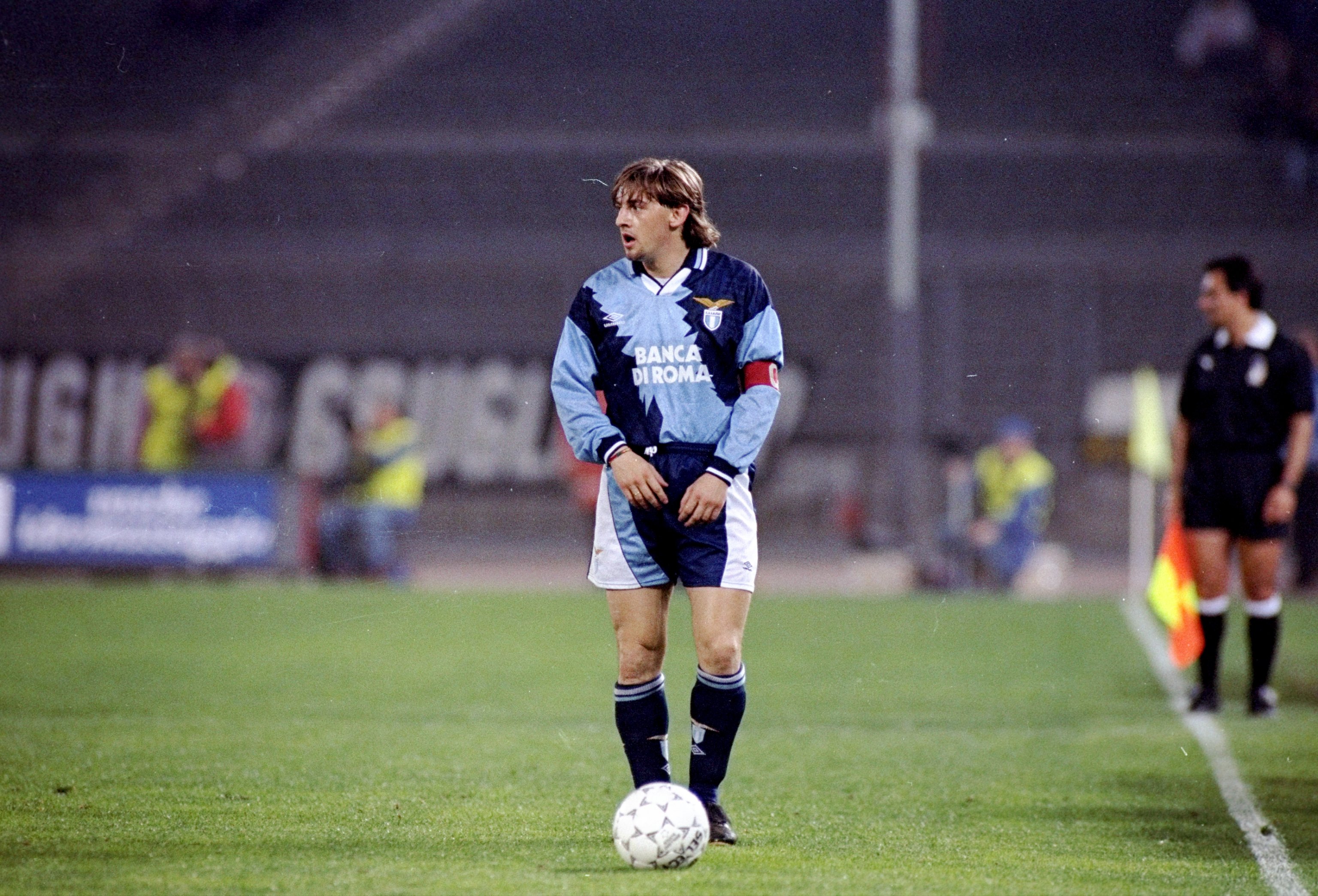
In addition to small boots, Signori was also famous for his unusual run-up to penalties, in that there was none. He would simply stand in front of the ball, take one step and then shoot.
Signori got the idea from watching darts on TV, where players would throw from a standstill. “I knew if I could get the proper precision, power didn’t matter,” he confessed.
It worked, Signori ended his career with a record of 44 scored from 52 attempts. He would later refine the method even more, by looking at the goalkeeper’s knees and seeing which one was bent, assessing this would be the leg they’d spring from to dive.
Signori’s unique method was such that Neymar would later reach out in order to improve his own technique. Then at Barcelona, the Brazilian had missed two consecutive penalties and wanted a new way of bamboozling goalkeepers.
Yet Signori’s goals alone were not enough to bring a title back to Rome. Zeman was sacked by Lazio at the beginning of 1997, and Signori’s own time in the capital was due to run its course by the summer.
Sven-Goran Eriksson arrived and instantly found red flags with Signori. “A very good striker, but I couldn’t have him at the club,” said Eriksson in a 2021 interview.
“This wouldn’t happen at Juventus or Milan,” was often a refrain Signori would throw out when a mishap within the club happened. Eriksson was attempting to change the mentality at Lazio, and knew he had to shift Signori on.
The Swede used him sparingly in the first half of the 1997-98 season, and when Lazio sent him on loan to Sampdoria for the remainder of the campaign there was none of the uproar from two years earlier.
Signori’s spell in Genoa was brief, lasting just six months before he signed for Bologna as a replacement for Baggio, who urged him to follow his lead.
Like his Italy teammate, it was in Emilia-Romagna that Signori found a second lease of life.
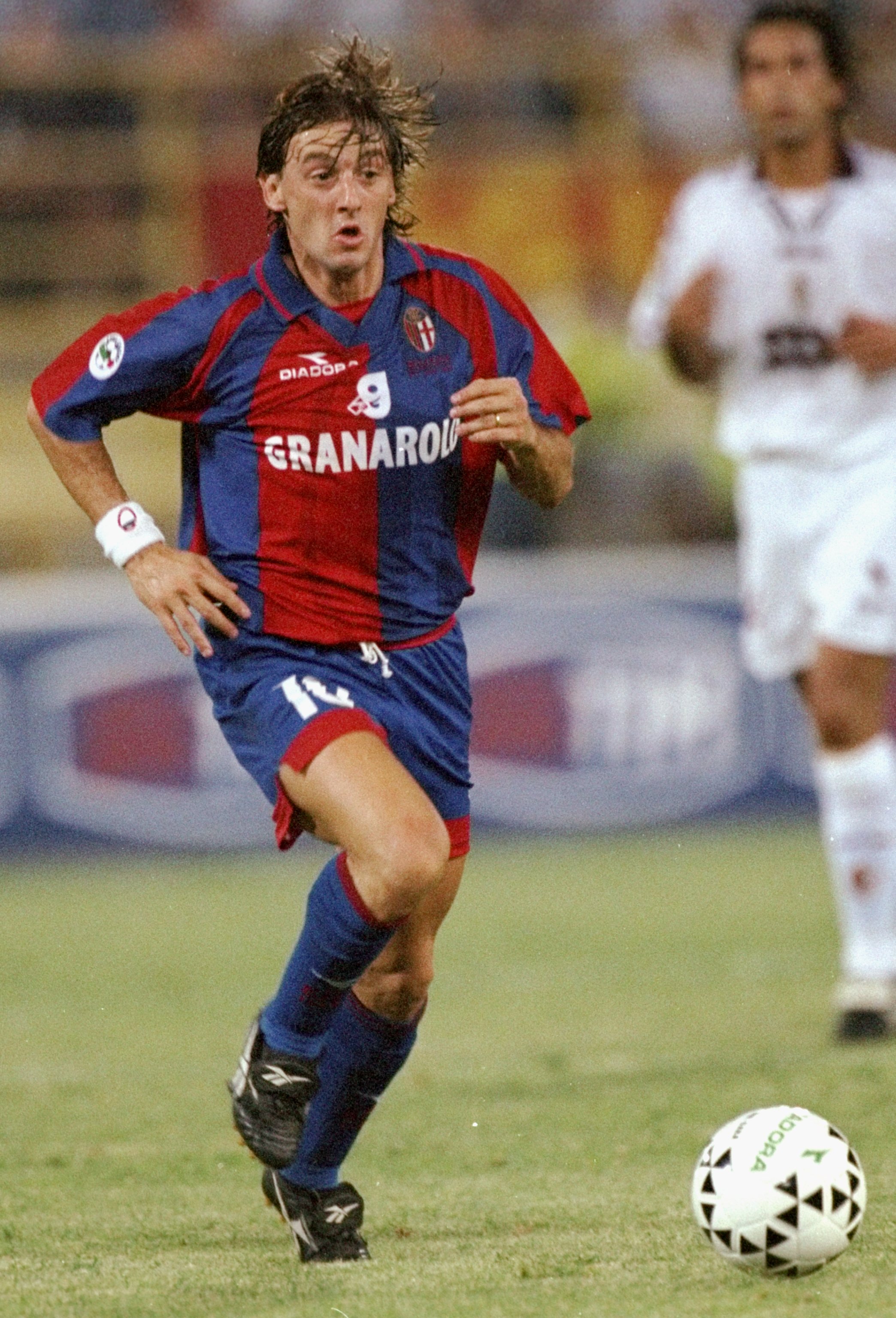
Baggio guided Bologna into Europe the prior season, and Signori took it from there. Under the wily sage of calcio, Carletto Mazzone, Signori helped Bologna win the Intertoto Cup and gain entry into the UEFA Cup.
Wins against Sporting Lisbon, Slavia Prague, Real Betis and Lyon saw the Rossoblu face Olympique Marseille in the semi-final, with the chance of facing Parma in what would’ve been a fifth all-Italian final of the decade, and all-Emilian final to add further spice.
Cruelly, a penalty from Laurent Blanc three minutes from time at the Stadio Dall‘Ara meant Bologna lost on away goals after the first leg finished goalless in France. The game remains a painful memory for Signori.
After the disappointment with Samp he had rediscovered his goalscoring mojo, netting 23 in all competitions. “To say my time at Bologna was a beautiful story would be an understatement,” he reflected years later.
Signori’s time at Bologna represented the longest spell of his career: six seasons, 176 games and 84 goals. Many of them spectacular.
Asked to name the best goal of his career, a stunning two-touch volley for the Rossoblu against Udinese in March 2003 instantly leaps to mind.
Signori bowed out of the Italian game in May 2004, his departure overshadowed by Baggio’s retirement. Shorn of his goals, it was hardly a surprise that Bologna were relegated the following season, despite Mazzone back as coach.
Signori finished his career in 2006 after stints in Greece and Hungary. With 188 goals in Serie A, he sits joint-10th on the all-time scorer list, alongside Alessandro Del Piero and Alberto Gilardino.
Yet within the top 10, only Gunnar Nordahl, Giuseppe Meazza and Ciro Immobile have a better goals-to-game ratio.
Not bad for a player who was originally a winger and stood at only 5ft 5in. A player who became so devastating, with a left foot so lethal, his name became synonymous with goals and the word blended into his name.
Relive Roberto Baggio’s greatest World Cup goals on DCTV:
Related Articles
Related Articles
We get a local take on what's hot in Cremona - where to eat and drink, sights to see and handy hints that might not be in the tourist guides.
The Artemio Franchi will always be the main reason calcio fans head to Florence but there is one other thing that must be on the to-do list.
After the final whistle is blown at Stadio Giuseppe Sinigaglia, there is no better place to unwind than Bellagio.


